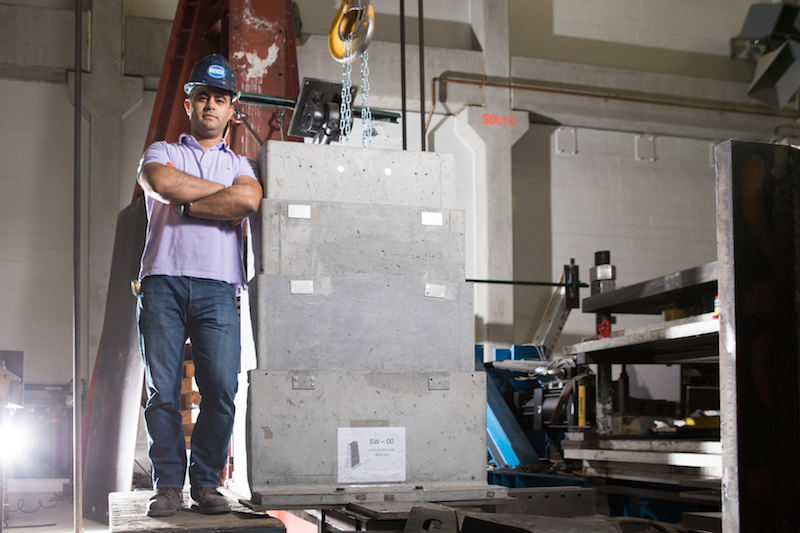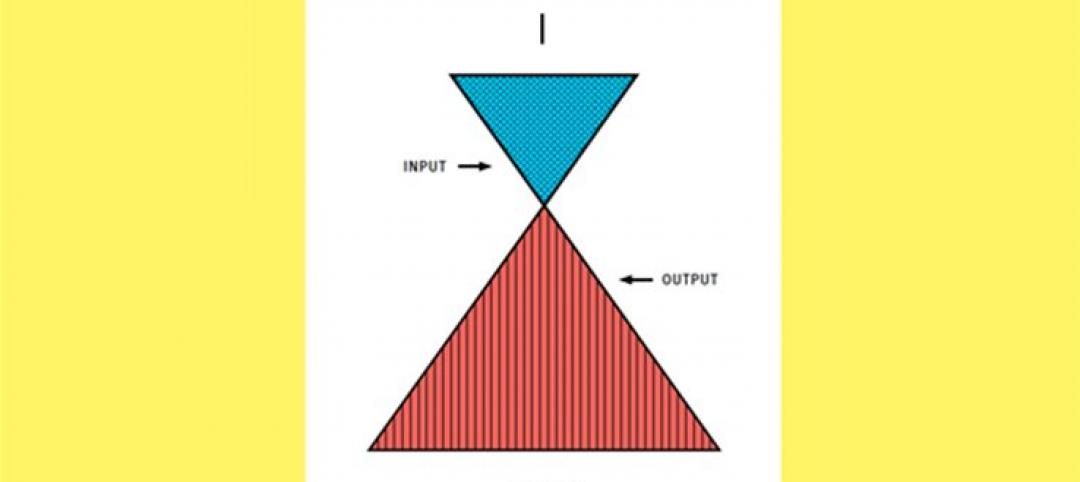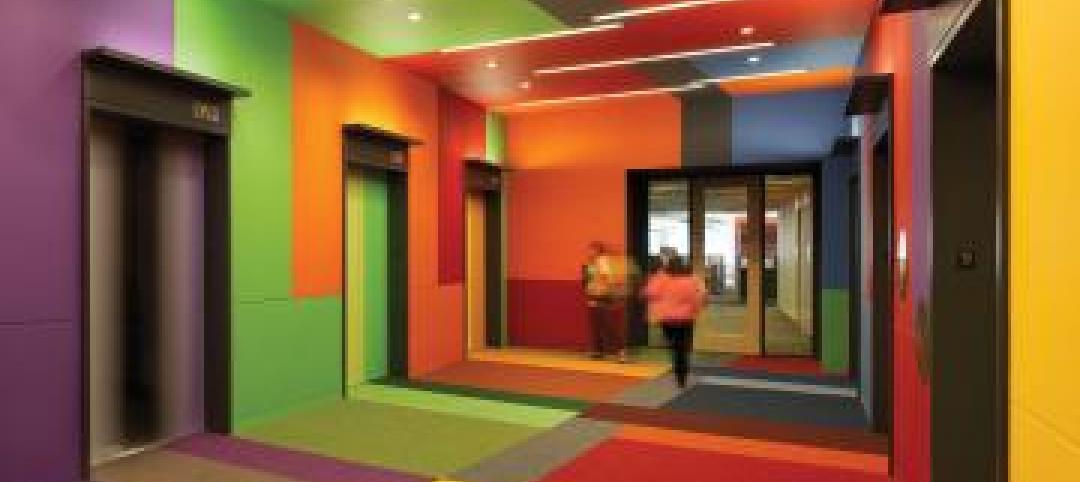Water is often times considered to be the most powerful force on the planet. Which means, under the right circumstances, it can also be the most destructive. All you have to do is watch footage from the tsunami that occurred in Japan in 2011 to understand just how devastating a force it can be. And when the water begins rising, be it from an ocean, lake, or river, it can seem like there is no stopping it from its relentless march forward. Jorge Cueto, a Ph.D. candidate at the University of Buffalo, however, has come up with an invention to try and do just that: stop floodwaters before they can ever reach homes or businesses.
Cueto came up with a patent-pending system of telescoping fiber-reinforced concrete boxes that he hopes to develop into “rise on demand” floodwalls. Think of Russian nesting dolls, but with concrete blocks.
Each section of the wall rises from another section that is just a little larger. Using a telescopic design such as this means that when the floodwalls are not needed, they will be able to retract underground so as not to block water views or roads and sidewalks, such as those around hospitals, that cannot be permanently blocked.
In order to keep the water from flooding into any open cracks that may result from where each block meets the one above and below it, Cueto is in the process of developing a system of gaskets to make the walls water tight. He is also working on expandable flaps to cover the space between each wall section.
Much of the science and plenty of technical aspects still need to be worked out before Cueto’s telescopic walls find a real-world use, but the main idea is in place and, if successful, Cueto’s invention could help prevent millions of dollars worth of damages due to floods.
For the full story, click here.
Related Stories
Smart Buildings | Apr 28, 2014
Cities Alive: Arup report examines latest trends in urban green spaces
From vertical farming to glowing trees (yes, glowing trees), Arup engineers imagine the future of green infrastructure in cities across the world.
| Feb 14, 2014
Must see: Developer stacks shipping containers atop grain silos to create student housing tower
Mill Junction will house up to 370 students and is supported by 50-year-old grain silos.
| Feb 5, 2014
7 towers that define the 'skinny skyscraper' boom [slideshow]
Recent advancements in structural design, combined with the loosening of density and zoning requirements, has opened the door for the so-called "superslim skyscraper."
| Jan 28, 2014
2014 predictions for skyscraper construction: More twisting towers, mega-tall projects, and 'superslim' designs
Experts from the Council on Tall Buildings and Urban Habitat release their 2014 construction forecast for the worldwide high-rise industry.
| Jan 7, 2014
Concrete solutions: 9 innovations for a construction essential
BD+C editors offer a roundup of new products and case studies that represent the latest breakthroughs in concrete technology.
| Dec 12, 2013
Book announcement: The economic performance of sustainable construction
Thirty specialists from around the world challenge the question of (higher) costs related to sustainability of the built environment
| Dec 10, 2013
16 great solutions for architects, engineers, and contractors
From a crowd-funded smart shovel to a why-didn’t-someone-do-this-sooner scheme for managing traffic in public restrooms, these ideas are noteworthy for creative problem-solving. Here are some of the most intriguing innovations the BD+C community has brought to our attention this year.
| Nov 27, 2013
Wonder walls: 13 choices for the building envelope
BD+C editors present a roundup of the latest technologies and applications in exterior wall systems, from a tapered metal wall installation in Oklahoma to a textured precast concrete solution in North Carolina.
| Oct 15, 2013
15 great ideas from the Under 40 Leadership Summit – Vote for your favorite!
Sixty-five up-and-coming AEC stars presented their big ideas for solving pressing social, economic, technical, and cultural problems related to the built environment. Which one is your favorite?
| Sep 9, 2013
Top 25 continuing education courses on BDCuniversity
An overview of the 25 most popular continuing education courses on BDCuniversity.com.
















